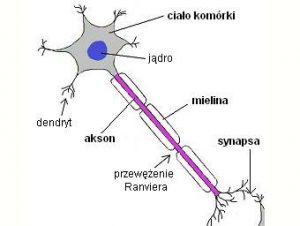Artificial intelligence may soon be better at diagnosing schizophrenia than humans


Schizophrenia is more than just delusions and hallucinations. People with this mental illness also often have speech and thinking disorders that can be detected by artificial intelligence based on the analysis of their speech. And as it turns out – artificial intelligence can be better at this than psychiatrists and psychologists.
Symptoms of schizophrenia
Schizophrenia is most often associated with hallucinations – the patient hears voices or sees something that is not there, and with delusions such as thoughts of persecution. However, these are not the only symptoms of this mental disorder, and moreover, they are not necessary for its diagnosis.
Other symptoms of schizophrenia include: apathy, reduced facial expressions, anhedonia (inability to feel positive emotions) and difficulties in conducting social activities. In addition, speech disorders are frequent and the so-called FTD (formal thought disorder).
Speech problems include: difficulties with using the right words, with intonation, grammar, declination. People with schizophrenia build sentences in a specific way and often use neologisms, i.e. words invented by themselves. Formal thought disorder (FTD) means inconsistencies in speech and loosening of associations. Such people may speak illogically, they may deviate from the content of the question when answering a question, and they may change threads often, so that it may be difficult for the other person to understand what the main idea of the utterance is. Some people with schizophrenia talk very quickly and a lot, but convey little content, while others, on the contrary, speak very briefly. Susceptibility to distraction is also common, which means that a person with schizophrenia may suddenly stop talking because something distracted his/her.
Neurobiological studies have shown that FTD is associated with a reduction in gray matter volume in the inferior frontal gyrus, superior temporal gyrus and inferior parietal lobule in both hemispheres of the brain. With a decrease in volume, there is a reduced activity of these structures, both at rest and when performing language tasks.
Schizophrenia is not an easy disorder to diagnose, because similar symptoms occur in different diseases. It happens that specialists do not agree on whether a person has schizophrenia or not, so additional methods of diagnosis would be very helpful.
Computer methods in the diagnosis of schizophrenia
For several years, in the diagnosis of schizophrenia, attempts have been made to use artificial intelligence (neural networks), which detects formal thoght disorder based on the analysis of speech.
One of the studies was conducted by Bedi in 2015. Adolescents and young adults from the high-risk group for schizophrenia participated in it. These were people who had already been in contact with a psychiatrist due to single symptoms of schizophrenia or had someone with this disorder in their family. The study used a neural network in the so-called coherence model, i.e. the computer examined the coherence of the participants’ statements. It turned out that the artificial intelligence on this basis correctly predicted who will be diagnosed with schizophrenia in the next 2.5 years. The psychiatrist failed to predict this correctly.
Polish researchers – Justyna Sarzyńska and Aleksander Wawer used in their study a newer model of the neural network, the so-called ELMo model. It was created in 2018 and, unlike older models, it can take into account different meanings of the same word and represent the meaning of the entire sentence.
The study involved 35 patients and 35 people in the control group. The group of patients included people treated pharmacologically for diagnosed schizophrenia, who had not experienced worsening of symptoms or any new symptoms of the disease in recent weeks. Clinical interviews were conducted with each person, in which they were asked about childhood, family, closest person and hobbies, and two questions not related to this person were asked – why people get sick and why people believe in God. After transcription, the interviews were handed over for evaluation to two specialists: a psychiatrist and a psychologist. The psychiatrist was to determine whether it was an interview with a person suffering from schizophrenia or a healthy person, using criteria he considered appropriate, while the psychologist was to use the FTD detection scale. In addition, the interviews were scored by two neural networks: the consistency model and the ELMo model.
It turned out that the highest efficiency (84%) had artificial intelligence in the ELMo model. It correctly diagnosed 28 out of 35 patients and 31 out of 35 healthy people. In second place was a psychologist (74%), in third a psychiatrist (71%), and the worst in this study was the coherence model, which had 69% effectiveness.
Interestingly, already during the publication of this study, a new model of the neural network appeared. The researchers no longer had the opportunity to officially add it to the study, but out of curiosity, they also analyzed the interviews with this model and it accurately diagnosed schizophrenia or lack of it in 90% of people.
This study was conducted in 2020. I have not found newer publications, but I guess that research is being conducted and soon artificial intelligence will probably be even more accurate.
For now, however, further research is needed on larger groups. It is also worth noting that currently neural networks do not really diagnose schizophrenia, but only detect formal thought disorder. However, FTD does not occur in all people with schizophrenia and is sometimes present in other conditions.
I do not know if artificial intelligence will ever completely replace humans in the diagnosis of mental disorders, but the results of research show that soon it could become a good tool facilitating the diagnostic process of schizophrenia. It could also be used in screening tests and for remote monitoring of the patient’s condition.
References
Author: Maja Kochanowska






Add comment